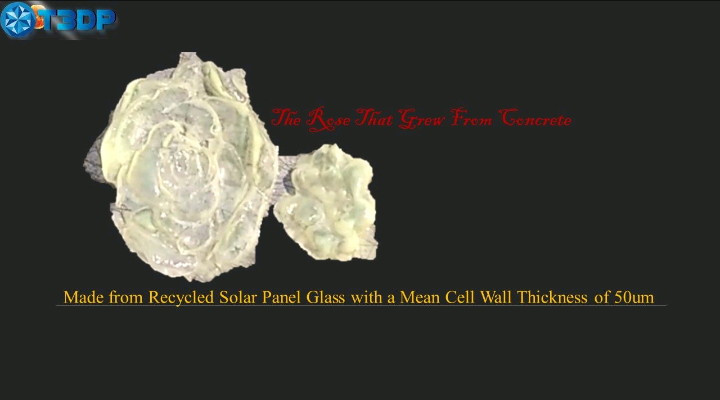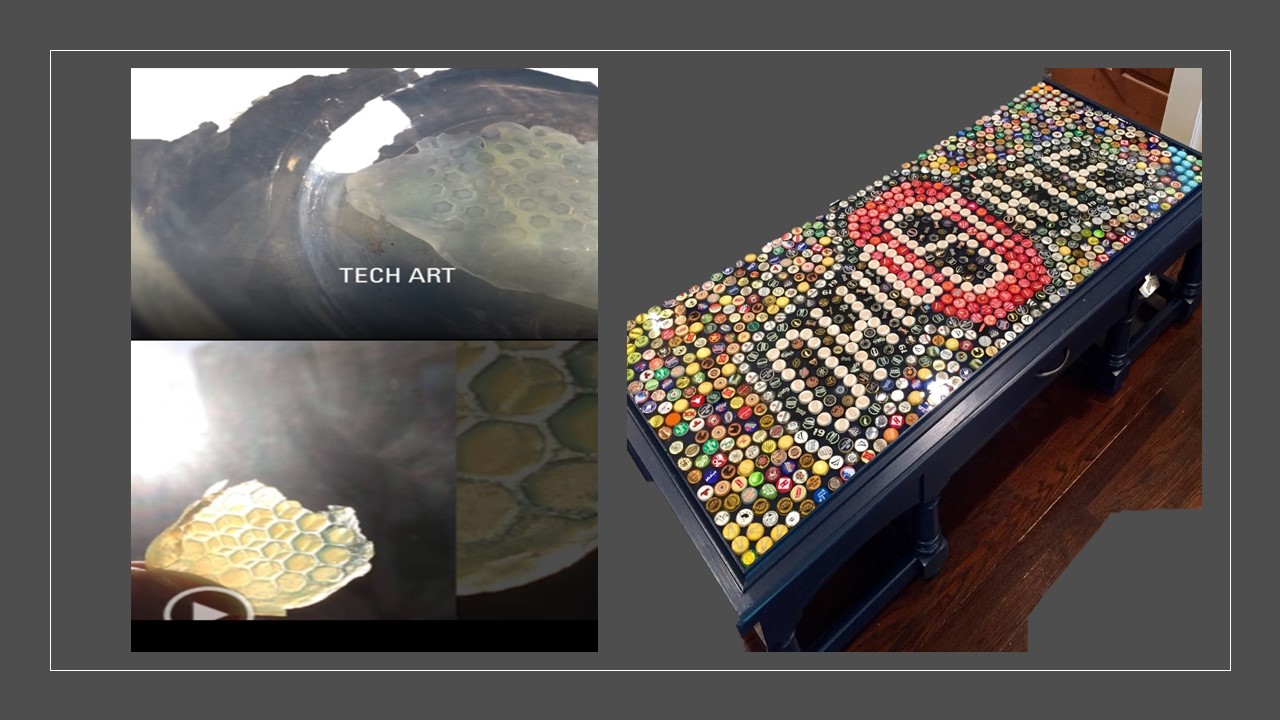The 3D Printing Industry interviews series looking at low carbon power generation together with 3D printing and renewable energy continues with deep dive into the application of additive manufacturing for solar energy.
“3D Printing has the potential to revolutionize the solar industry,” says Daniel Clark. The entrepreneur holds multiple patents in volumetric solar energy and 3D printing and is the founder of solar energy company T3DP
I spoke to Clark about the efficiency inroads additive manufacturing is making in the development of next-generation photovoltaics, and the potential for the technology to unlock a new era of solar energy.
According to BP’s most recent Statistical Review of World Energy, solar power recorded its largest-ever increase in 2020, and alongside wind accounted for more than 90 percent of the entire renewable energy sector’s growth across the year. This growth is also reflected in the rising market value of the sector, with the global solar energy market expected to be worth $422 billion in 2022, in comparison to $86 billion in 2015.

The sun is rising on solar 3D printing
Solar remains the third-largest renewable electricity technology behind hydropower and onshore wind, with power generation increasing by a record 23 percent in 2020 compared to 2019.
While the technology’s plus points include helping people to save money on their bills and become energy independent, there are also several caveats, such as high upfront costs, large space requirements, and the environmental impact of manufacturing the photovoltaic panels. In fact, it takes 130 liters of oil to produce a single silicon solar panel and an estimated 78 million metric tons of toxic solar panel waste will end up in landfills by 2050.
Several years back, there was a flurry of activity within the additive manufacturing sector surrounding the 3D printing of more efficient, low-cost photovoltaics, spurred on by various solar power innovation contests launched by the likes of the US Department of Energy. However, there seems to have been somewhat of a tailing-off in this area since then.
Recently, though, there seems to have been a resurgence of activity in this field, with the Chemistry of Thin Film Materials (CTFM) laboratory at the University of Erlangen in Germany announcing a grant from the European Research Council (ERC) to rapidly prototype solar cells using its atomic-layer additive manufacturing technology. The lab hopes to bring the solar cells to market with the help of Formnext Start-up Challenge 2021 winner, atomic layer 3D printer developer ATLANT 3D Nanosystems.
One firm that has remained very active in this field is California-based start-up T3DP, founded by Clark, which has been applying its patented volumetric 3D printing technique to build perovskite-based solar panels since 2019.
Nature-inspired volumetric 3D printing
Taking inspiration from the honeycomb structure of insect eyes, T3DP has designed a novel solar cell able to capture three times more energy at half the cost of conventional, silicon-based cells. The process also allows micro-solar cells to be manufactured at close to carbon neutral by re-using glass from discarded solar panels.
“Volumetric 3D printing has the potential to revolutionize the solar industry by increasing the power output two to three times that of flat silicon panels,” Clark says. “A typical flat solar panel produces 200 watts per meter squared, while our designs can reach 400-600 watts in the same area.”
Volumetric 3D printing is a process capable of overcoming the low throughput, geometric restrictions, structural defects, and scaling concerns commonly associated with additive manufacturing by curing objects in a single step, rather than layer by layer.
Clark worked with the team of Alexander Lippert, Associate Professor of Chemistry at Southern Methodist University (SMU), to develop and commercialize a unique volumetric 3D printer, dubbed the 3D Light PAD, designed specifically for the 3D printing of a wide range of complex components for solar cell manufacturing.
The printer operates by using a photoswitchable photoinitiator to direct polymerization to points only at the intersection of two different wavelengths of light, creating high-resolution 3D components. T3DP formed a strategic partnership with AsterTech, a company that alongside the Air Force Research Laboratory (AFRL) has developed an aerosol-jet-assisted perovskite deposition method for fabricating high-quality solar cells on the complex surfaces SMU and Clark produced using their 3D Light PAD printer.

Clark’s volumetric 3D printing patent was granted last year after a four-year application process, with the IP now being utilized by volumetric 3D printing start-up xolo.
While there are no real-world application scenarios that Clark can publicly talk about right now due to a non-disclosure agreement (NDA) with xolo, he says: “While the volumetric 3D printing technology is awesome, it’s still two to three years away before we will see any major mainstream applications. However, the printer is the beachhead to my new Subzero Molding and Embossing technology that can scale the manufacturing of our micro 3D solar cell substrates from recycled solar panel glass.
“We have some continuation of patents that include a new True Volumetric Display from Lightfield Labs’ Solid Light.”
Lightfield Labs is developing next-generation holographic display technologies and has backing from the likes of multinational technology firm Bosch which, Clark says, will have an interest in the LightPAD 3D printer and its pending patents going forwards.

Scaling solar with next-gen advanced manufacturing
Clark’s Sub Zero Manufacturing technology is designed for the mass production of flexible optically smooth solar cell substrates from recycled solar panel glass which do not require post-processing or polishing. The process involves mixing the crushed recycled glass with Glassomer UV Curable Resin and Tethon 3D Genesis Development Resin and “punching” the material into a 3D spiked pyramid shape imprinted with ultra-small micro LEDs.
The technique is reportedly “thousands of times faster” than 3D printing alone, and Clark believes the technology could also be effectively applied to the semiconductor industry to improve its green footprint.
Regarding the current state of the solar energy generation field, Clark offers: “The current silicon solar sector is dominated and controlled by China. The price of Silicon was up 300 percent in 7-8 weeks last October. As this trend continues upwards I see an opportunity for the Western world to reignite an extinguished flame through advanced manufacturing of aesthetically appealing solar that will be difficult to counterfeit.
“I foresee our advanced one-step Volumetric 3D Printing and unique Subzero Forming processes to create a synergistic dichotomy to balance the solar manufacturing power back to the EU, USA, and the Western world.”

Clark also works for Villara Energy Systems, developer of the VillaGrid energy storage system which claims to deliver more power, more safety, and more useful life than traditional home batteries. While the firm isn’t using Clark’s volumetric 3D printing technology yet, he says it is plausible that someday the process could help the mass manufacturing of batteries and solar cells at the firm’s battery and solar manufacturing facility in Sacramento County, California.
Make sure to subscribe to our newsletter and don’t miss the next installment of the series, where we will be looking at how 3D printing is helping to bring the hydrogen economy closer to reality.
Looking for a career in additive manufacturing? Visit 3D Printing Jobs for a selection of roles in the industry. You can also stay connected by following us on Twitter and liking us on Facebook.
Subscribe to our YouTube channel for the latest 3D printing video shorts, reviews and webinar replays.
Featured image shows a hexagonal part of a larger solar panel by T3DP. Image via T3DP.


